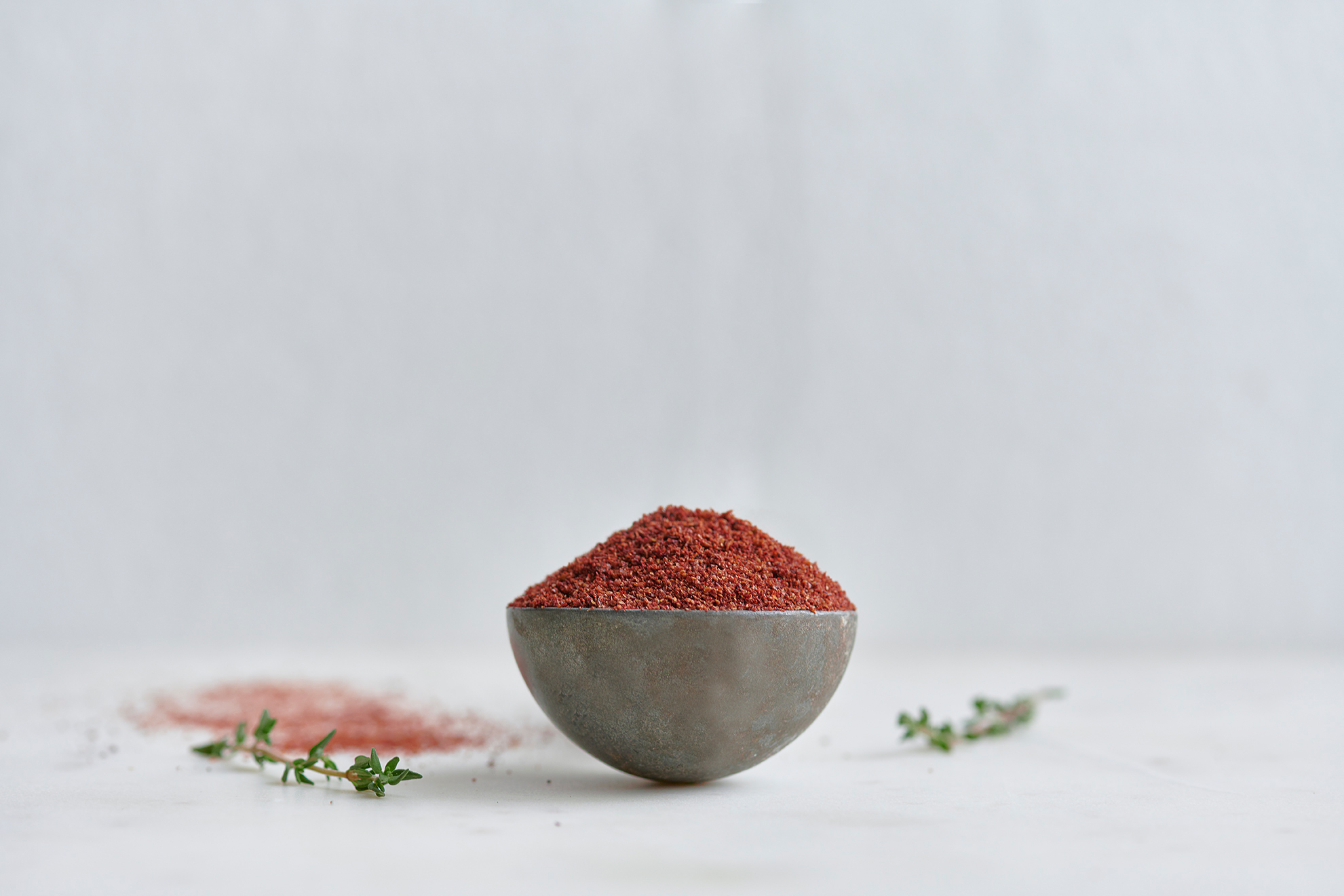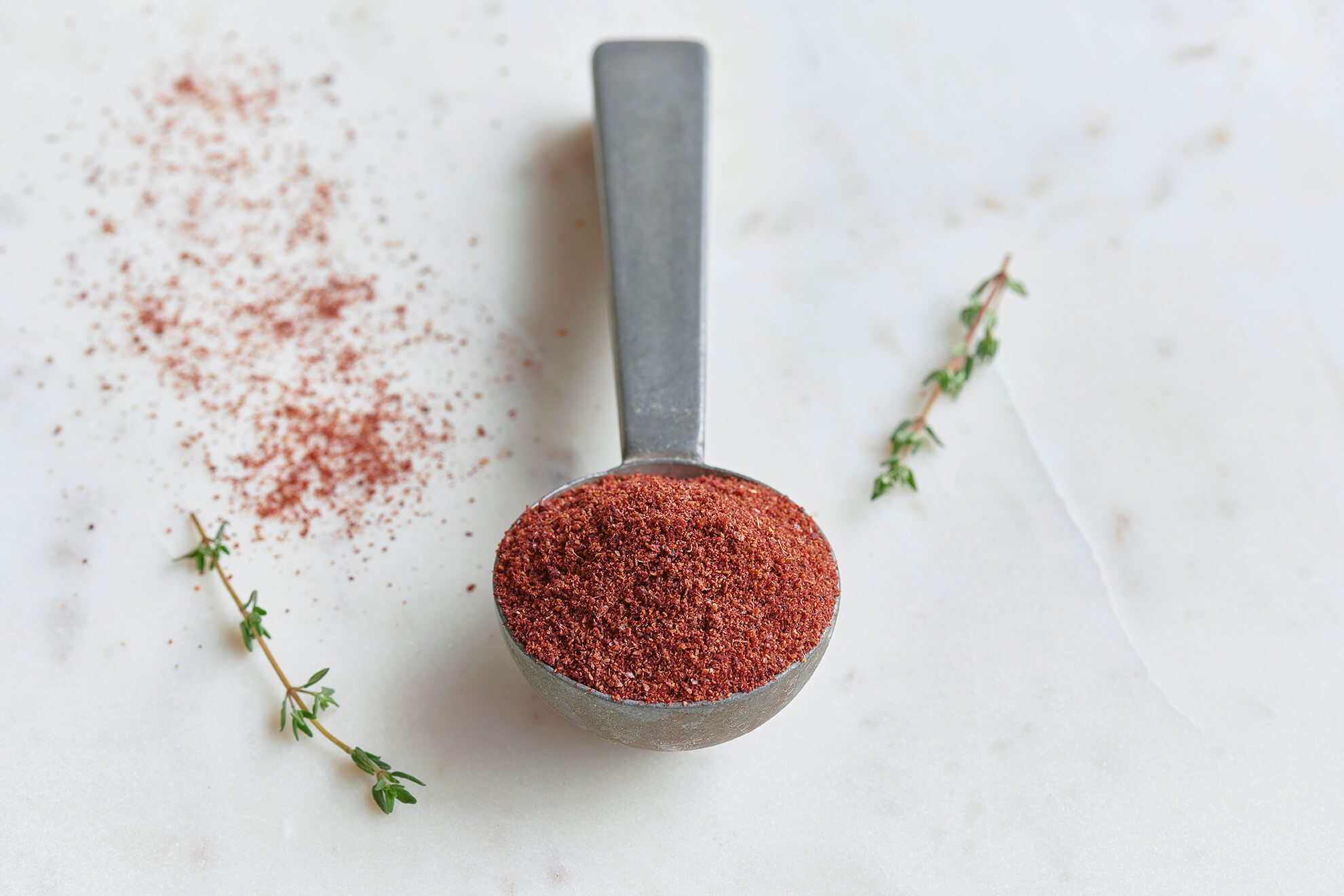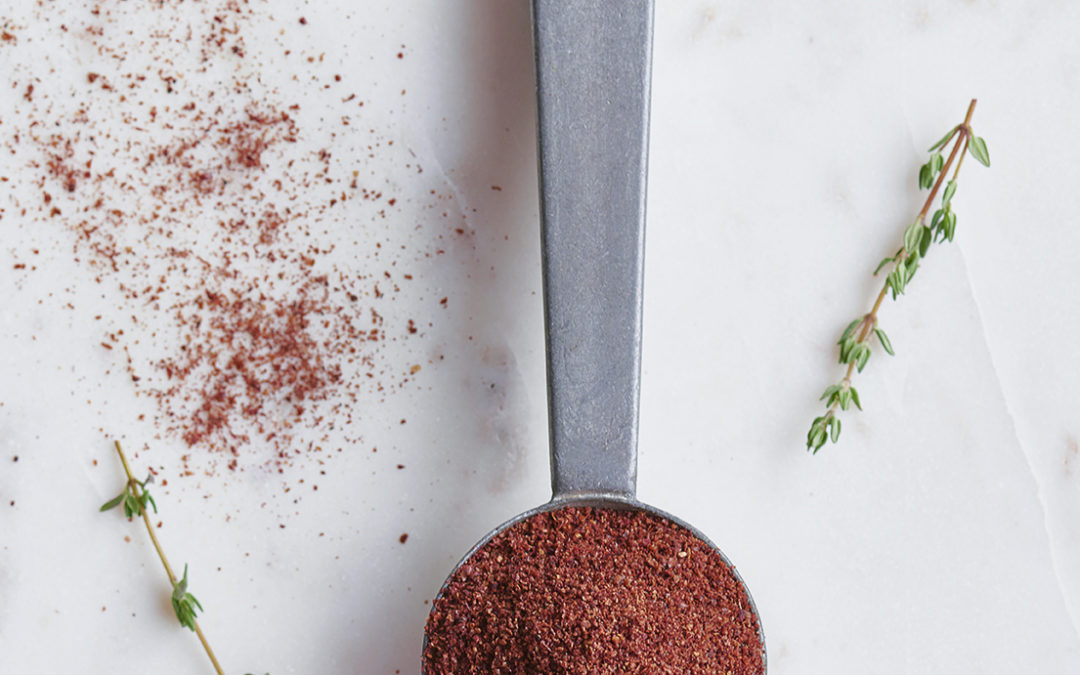As exotic flavors rise in popularity in western cuisine, an easy way to stay ahead of the trend is to bring sumac into your kitchen. Not only is this spice a longstanding staple in traditional Middle Eastern food, its flavor is both unconventional and familiar at the same time, making it an easy addition to a wide variety of dishes. With a bright, tangy flavor that compliments sweet and savory dishes alike, sumac is a fun and carefree spice with unique character and a cult following.
A staple in Middle Eastern cuisine, natural medicine and textile production, sumac has many uses and a rich history. While it is most commonly featured in Turkish, Arabic, and Lebanese foods, it is full of possibilities and is a must-have in any spice cabinet.
In this blog, we’ll discuss the history, origins, and common uses for this zesty and colorful Middle Eastern table spice.
Flavor
While sumac doesn’t have a strong aroma, its taste is pleasantly sour and slightly tangy. With its bold, astringent quality, its flavor is easily compared to lemon or vinegar. Its citrus-y tones make it the perfect spice for any dish needing a tart, lighthearted pop of flavor.
Appearance

Some might know the name sumac from its reputation as a poisonous plant that can cause skin rash and irritation. However, there are many varieties, most of which are safe (and, many believe, beneficial) for human consumption.
While the poisonous plant is characterized by its white berries on droopy stalks, edible sumac is most easily identified by its striking cone-shaped clusters of red berries that grow upright. Harmless plants have red berries, white flowers, and branches that are lined with skinny green leaves. These plants grow up to 10 feet tall and thrive in dry, rocky ground at high altitude.
When the berries of a sumac plant are harvested, dried, and ground into a powder, the powder has a dark brick red color.
History
Native to the Middle East, sumac has been used throughout the region for centuries in a plethora of ways.
In ancient Greek and Roman times, sumac was used to dye wool and tan leather. It was also used in alternative medicine for its believed antioxidant and antimicrobial properties. Today, this celebrated spice is still believed to benefit digestion in alternative medicine; for this reason, sumac berries are commonly juiced and made into a pungent drink to settle the stomach and relieve digestive issues.
In Rome, sumac was used in cooking as a way of adding a citrus-like quality to food. The Romans used it in the same way westerners use lemon or vinegar to flavor food. For a long time, the spice was also used in Europe to add tartness to dishes until Europeans gained access to lemons.
Today, sumac is still a household ingredient in Middle Eastern cooking and is used, both in its fresh form as a berry and in its dried form as a powder, for its natural sour flavor.
Origins
Sumac comes from the berries of a decorative bush that grows wild in the Middle East called the Staghorn Sumac bush. This bush yields tangy red berries that can be used fresh or dried and ground into a powder.
This plant is native to Sicily and spreads from there along the Mediterranean, through Turkey and areas of the Middle East to the Caspian Sea.
Quality/Sourcing/Safety
Pacific Spice is dedicated to producing the highest quality spices. Our product is sourced from Turkey to ensure a flavorful and dependable addition to your favorite dishes.
Storing
Ground sumac should always be tightly sealed and stored in a cool, dry, dark place; above ground and away from the wall. When it’s stored properly, the spice can stay fresh for up to one year.
Uses

Sumac is mostly used to flavor food, but it has also been used in alternative medicine since ancient times for its believed antimicrobial and antioxidant properties and its perceived ability to support a healthy colon, liver, lung, and lymphatic system. Although it is most commonly known for its flavor and believed medicinal benefits today, sumac has also been used as a dyeing agent for wool and for tanning leather since ancient times.
In Middle Eastern restaurants, you’re likely to see ground sumac on restaurant tables as a common spice intended to season anything; from rice, to salad, to meat dishes. It’s also a key ingredient in the traditional seasoning, Zaatar, which is rapidly gaining popularity in western cooking.
Sumac is delicious on:
- Meat marinades for fish, chicken, and lamb
- Yogurt or hummus, paired with veggies, meats, or pita bread
- Salads, soups, and breads.
In addition to these dishes, you can experiment with this spice by adding it freely to anything you’d normally season with lemon or vinegar.
PSC Sumac
If you are interested in ordering from PSC, just request Sumac Ground and we will be happy to fill your order.
As always, we encourage you to experiment with this spice on your own, use your imagination, and find your own favorite uses for this vibrant, zesty spice from the Middle East.
Perhaps it’s a dish from your home country, or one you just invented – Do you have a favorite dish that includes sumac? Connect with us on Instagram and share!

